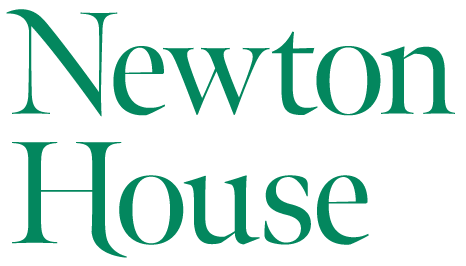John Newton and Newton House
Michael A. G. Haykin
In many respects, John Newton (1725–1807) was a quintessential eighteenth-century Evangelical. The Anglican pastor-theologian was committed to a moderate Calvinism, Christocentric piety, conversionist preaching, and a generous catholicity, all of which were typical of the Evangelical movement in the latter half of the eighteenth century, a movement that helped to refashion the manners and mores of Georgian England. When some of the heirs of that refashioning, Victorian and Edwardian Evangelicals, celebrated Newton’s life at the centenary of his death in 1907, they did so with a consciousness of their deep debt to the grace of God at work in Newton. “Of all the Fathers of Evangelical Churchmanship,” Eugene Stock of the Church Missionary Society noted at the time, Newton’s “story is the most remarkable; and it ought to be remembered with thankfulness to the omnipotent grace of God, which could transform such a man, given over as he was to wickedness, into a saint.”[1]
Among those who were asked to speak in 1907 at the various Newton celebrations held throughout England was Thomas Wright (1859–1936), regarded as an expert by his Christian contemporaries on all things relating to Newton and his close friend William Cowper (1731–1800), the renowned poet and hymnwriter. On the afternoon of the Lord’s Day, December 22, 1907, for instance, Wright gave a talk at St. Mary Woolnoth, London, where Newton had pastored for the last twenty-seven years of his life. As he drew his lecture to a close, he observed that there were three of Newton’s works that were “imperishable” classics: his letters to his wife,[2] Newton’s own story of his conversion,[3] and the Olney Hymns (1779).[4]
The first of these classics had been written by Newton to his wife, Mary Catlett (1729–1790), whom Newton called Polly, and was published after her death from cancer. Wright could well have widened the classic letters to include the 500 or so letters of spiritual advice that appeared in Newton’s lifetime, which confirmed his great gift as a spiritual mentor. Others that have appeared in more recent days have only served to deepen the conviction that, as G.R. Balleine once put it, Newton was “the great spiritual director of souls through the post” in this remarkable era of revival and mission.[5]
Newton House seeks to follow in Newton’s footsteps and to be a means of mentoring Christian scholars, helping them to undergird their scholarship with a biblical spirituality, and encouraging them to devote themselves to the church, to the task of discipleship, and to the pursuit of a Christ-centered, catholic spirit.
[1] Eugene Stock, “Introductory Note” to John Calls, ed., John Newton: Sailor, Preacher, Pastor and Poet (London: S.W. Partridge & Co., 1908), 5.
[2] John Newton, Letters to a Wife (1793).
[3] John Newton, An Authentic Narrative of Some Remarkable and Interesting Particulars in the Life of —— (1764). This work has been reprinted as The Life and Spirituality of John Newton, introd. Bruce Hindmarsh (Vancouver, BC: Regent College Publishing, 2003).
[4] John Newton and William Cowper, Olney Hymns, in Three Books (1779). A facsimile edition of this work was published by The Cowper and Newton Museum, Olney, Buckinghamshire, in 1979. William Cowper wrote 67 of the 348 hymns in this volume. For the remark by Wright, see the summary of his “Address” in Calls, ed., John Newton, 91.
[5] Cited D. Bruce Hindmarsh, “Newton, John” in Oxford Dictionary of National Biography, ed. H.C.G. Matthew and Brian Harrison (Oxford: Oxford University Press, 2004), 40:728. See also Newton’s fabulous letters in Grant Gordon, ed., Wise Counsel: John Newton’s Letters to John Ryland, Jr. (Edinburgh; Carlisle, PA: Banner of Truth Trust, 2009) and Letters and Conversations: John Newton’s Restored Letters to John Campbell, ed. John Campbell and revised Sean Richardson (1811, [Ethridge, TN: Sean Richardson,] 2020).


